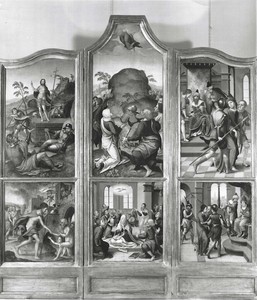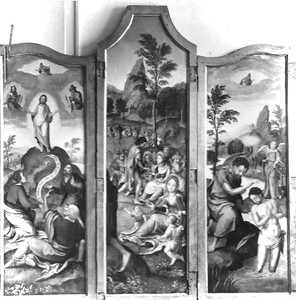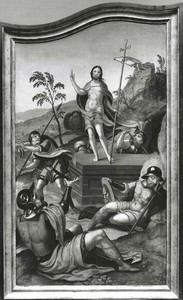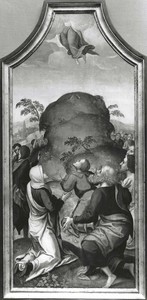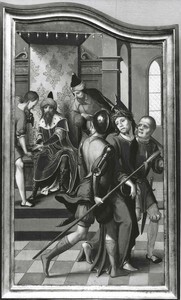Follower of Pieter Coecke van Aelst I
Unidentified Flemish painter, first half of the 16th century
Upper painting of the left wing of a triptych : the Resurrection of Christ
Oil on panel : 83 X 48 cm
Unsigned
Formerly in a private collection, Spain
(black and white photograph)
This is a comparative item
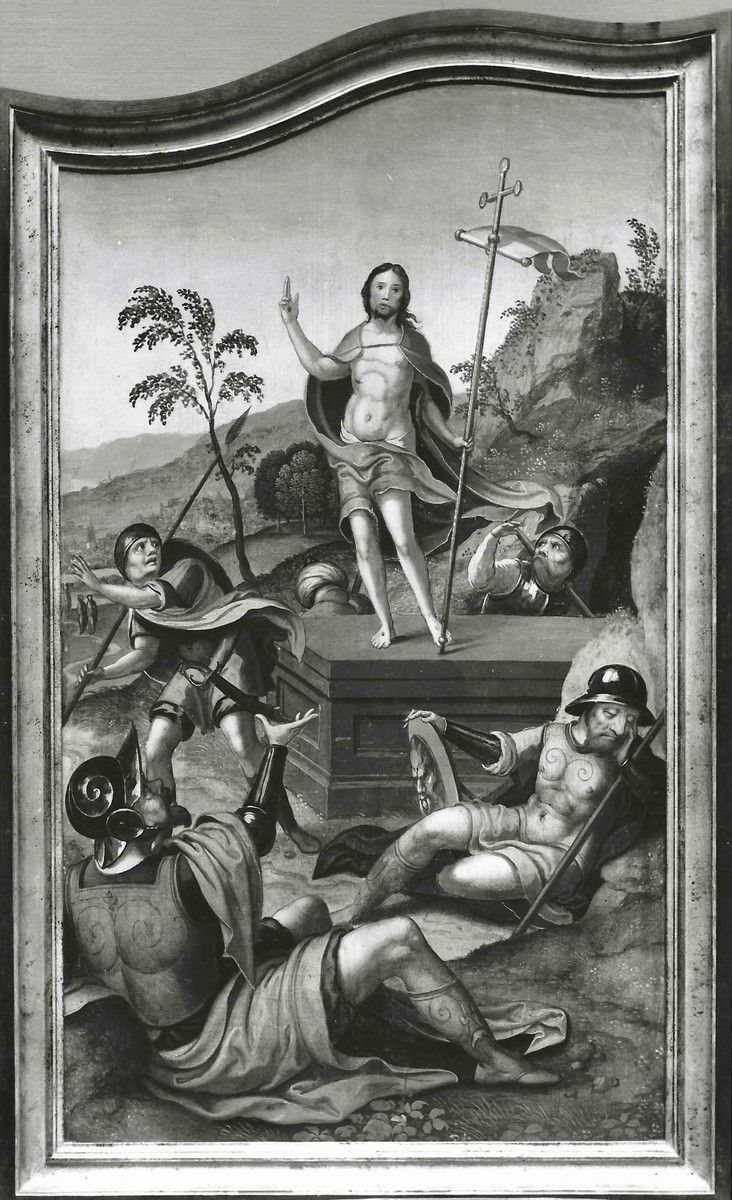
Painting for Sale
Comparative paintings
Click photos for more details

